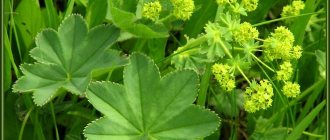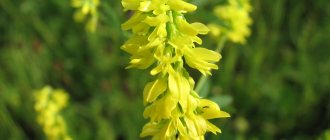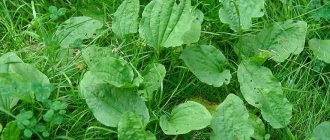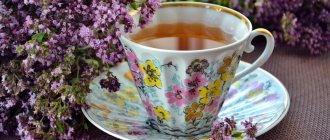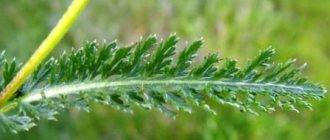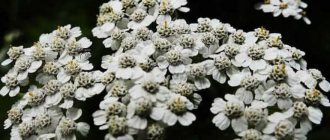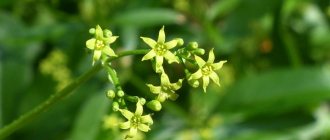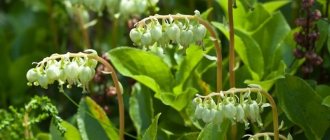Good day!
My name is Khalisat Suleymanova - I am a herbalist. At the age of 28, I cured myself of uterine cancer with herbs (read more about my experience of recovery and why I became a herbalist here: My story). Before being treated using traditional methods described on the Internet, please consult with a specialist and your doctor! This will save your time and money, since the diseases are different, the herbs and treatment methods are different, and there are also concomitant diseases, contraindications, complications, and so on. There is nothing to add yet, but if you need help in selecting herbs and treatment methods, you can find me at my contacts: Khalisat SuleymanovaInstagram page: instagram.com/fitoterapevt1
Telephone: 8
Email: [email protected]
I consult for free.
A large number of beneficial properties are attributed to this plant, but the most important of them is associated with its name. The name burnet comes from Latin and suggests that it can stop bleeding. Our ancestors actively used it in ancient times to treat a large number of diseases. In folk medicine, it has still not lost its relevance. It is often found in many drugs.
Medicinal properties and composition of the plant
Even in ancient times, it was popular due to its medicinal components. The underground part of the plant is used to produce medicines. It is important to strictly follow the instructions when undergoing treatment, as otherwise you may experience side effects.
The main indications for the use of this plant are disorders of the digestive system, gynecological ailments, inflammatory processes, colitis, bleeding, burns, varicose veins, and stomatitis. The benefits are based on the presence of a large number of useful components. Among them are especially distinguished:
- tannins;
- flavonoids;
- organic acids;
- vitamins;
- starch;
- sterols;
- saponins;
- micro and macroelements;
- essential oils.
Treatment with a medicinal plant is carried out both externally and internally. The most common positive effects on the body are:
- tissue regeneration;
- wound healing;
- elimination of germs and viruses;
- thrombosis due to blood loss;
- relieving pain;
- enveloping mucous membranes.
Most often, the basis for preparing a medicinal product is the root of the plant. It is in it that the largest amount of medicinal substances is concentrated.
Composition and release form
The roots and rhizomes of burnet have medicinal properties, which is why they are harvested. Plant tissue contains several beneficial substances:
- tannins;
- organic acids – gallic, ellagic, oxalic;
- saponin;
- essential oil;
- starch;
- sterol;
- gentriacontan;
- vitamin C.
The product is produced in the form of crushed plant materials, which are packaged in convenient filter bags. They can be stored at normal room temperature. The place should be dry and dark. Keep away from children and keep out of sunlight. The shelf life, subject to the described rules, is 5 years from the date of production.
Use of the plant in gynecology
All women face problems in this area. Thanks to its influence on the functioning of these organs, it is able to have a healing effect. Regarding gynecology, anti-inflammatory and hemostatic abilities are important. Most often, such complications can occur after surgical intervention, abortion, erosions and fibroids, inflammation of the ovaries and appendages, heavy menstrual and uterine bleeding.
In addition to internal administration, douching can be performed. Preparations based on this plant can have a general strengthening effect.
For severe discomfort during menstruation
Take in equal quantities:
- burnet rhizome;
- snake knotweed;
- licorice;
- plantain;
- shepherd's purse;
- dog-rose fruit.
Mix everything thoroughly and pour a large spoon into a thermos. Add 500 ml boiling water. Let stand overnight. Take 50 ml five times before meals. The course lasts 2-3 months.
INTERESTING fact: The healing properties of the herb adonis
For myoma and fibromyoma
You need the same amount:
- oak bark;
- burnet root;
- celandine;
- willow bark.
Add 4 tsp. into a container and pour 0.5 liters of boiled water. Place in a steam bath and keep there for 30 minutes. The strained and still warm raw material is used for douching. Repeat them up to 3 times a day.
This remedy can also cure prostatitis. The procedure is carried out by introducing a solution into the anus. It is advisable to do this twice a day in a lying position. Try to keep it inside for as long as possible.
For cervical erosions
To prepare a medicinal decoction, you need to take:
- 200 ml boiling water;
- 2 tbsp. l. crushed plant roots.
Boil everything over low heat for about half an hour. Let cool, pour through a sieve and pour again to the original volume. The resulting product is drunk one time before meals. The prepared product can be stored in the refrigerator for no more than 2 days.
With its help, endometriosis is also cured. In this case, you can combine oral administration and douching with the solution described above. Selecting the correct dosage and methods can overcome all the unpleasant manifestations of the disease in the shortest possible period of time.
Burnet in landscape design
Vigorous spreading species and varieties of burnet are recommended to be planted near the house or along paths in the garden. Group plantings of such plants also look very impressive. Its flowering lasts a relatively long time, but even faded bushes look very neat, as they have lush, bright foliage. Varieties with tall peduncles are often used to decorate the area located behind the flower bed. Low-growing species are used to decorate alpine slides. The inflorescences of this crop are also used for cutting, as they are able to maintain freshness for a long time.
Next to the burnet, lilies, basilisks, cereals, mountaineers and meadowsweet look great. The lush thickets of this plant look very impressive in the autumn, when their foliage changes its color to orange.
But this plant is used not only to decorate your garden, it has also found wide application in cooking. For example, washed rhizomes without skin are boiled and served as a side dish to the main dish. And fragrant fresh leaves are added to vegetable salads, fish dishes and a variety of cocktails. In Asian countries, tea made from the roots and leaves of burnet is very popular.
Burnet Medicinal properties
For the treatment of digestive system disorders
A large amount of food products pass through the organs of this system every day, and we cannot always know what effect they will have on it. Thanks to the bactericidal and antidiarrheal properties of medicinal products based on burnet, the most common phenomenon, diarrhea, can be eliminated.
Decoctions and infusions restore intestinal function, remove toxins, neutralize bacteria, stabilize functioning and improve the condition after poisoning. Most often it is recommended to use it as an additional remedy to the main treatment. To prepare this product you need:
- boiling water;
- 1 fresh plant.
Grind it up. You should get 50 g of the main component. Place it in a liter glass jar and fill it with liquid to the very top. Cover with a lid and let stand for half an hour. You need to drink ½ glass every 2 hours. After finishing drinking, you can add the sediment again, but now leave it for a couple of hours.
Due to its naturalness, the product can be used in case of poisoning in children. But it is important to consult with your pediatrician first.
For babies
Various diseases of the digestive system are quite common in infants. To eliminate them you need 2 tsp. Fill the plants with water. Boil over low heat for half an hour. No need to insist. Before taking, dilute 25 drops of the substance in a tablespoon. Take 3-4 times. Children from one to three years old should take no more than a teaspoon per day. Normalization of stool occurs quite quickly.
Simple ways to treat complex diseases:
Did you know that salt dressings work wonders? This recipe was published in Healthy Lifestyle in 2002. Unfortunately, it is not well forgotten, but deliberately erased from memory and discredited by pharmaceutical companies in pursuit of ... Read more
Honey and flax - strong health! Honey with flax seeds is the best remedy for blood vessels and immunity! Detoxify with flax seeds! Colon detoxification is possible using natural remedies. … Read more
MIRACLE MIXTURE FOR THE BODY I always determined the age plus or minus 1-2 years. Once I was visiting and there was a woman there, everyone thought that she was about 35 years old, but from the conversation we realized that we were mistaken. They asked how many… Read more
8 natural products that destroy parasites in the body Most of the world's population suffers from parasitic diseases. Common natural remedies will help your body fight parasites. Parasitic… Read more
Even 1 date causes an irreversible process in the body! Dates are an amazing fruit, which in many countries is credited with the properties of improving health and prolonging life. They say that in China there are long-livers, the basis... Read more
When vomiting
This is a manifestation of a wide range of diseases that may be associated with infections or other disorders. It prevents the development of bacterial microflora, removes toxic substances and normalizes the functioning of the digestive system and pancreas. To prepare you will need:
- 1 tbsp. l. plant leaves;
- glass of water.
INTERESTING fact: Turmeric for gastritis with high acidity
Place everything in a saucepan and let it boil. Then leave for another 10 minutes. After straining, drink 50 ml 4 times a day.
Pharmacology
The name of the plant is due to the fact that it has a hemostatic effect. Burnet also provides astringent, antiseptic and anti-inflammatory effects. The plant contains various substances. Thus, vitamin C has the following beneficial properties:
- strengthens the immune system;
- increases resistance to harmful factors, including poisoning;
- has antioxidant properties;
- prevents cell destruction;
- improves skin condition;
- activates collagen synthesis;
- helps absorb iron;
- strengthens the walls of blood vessels;
- helps normalize blood pressure;
- prevents fatigue.
The tannins that make up burnet are also beneficial for the body:
- antibacterial effect;
- slowing down the aging process;
- removal of toxic substances from the body;
- antioxidant effect;
- prevention of cancer;
- improved digestion;
- anti-inflammatory effect;
- removal of kidney stones;
- prevention of leukemia.
Saponins have the following medicinal properties:
- removing excess fluid from the body;
- mild laxative effect;
- stimulation of the synthesis of corticosteroids;
- lowering cholesterol levels;
- strengthening the immune system;
- expectorant action.
Sterols also have a similar effect. Even in small quantities, they have been proven to help lower bad cholesterol levels. Therefore, taking burnet prevents the development of atherosclerosis, as well as stroke and heart attack.
Use for hemorrhoids
Long-term stagnant accumulation of feces provokes a disease such as constipation. If you do not pay attention to it, hemorrhoids may occur. Application will help relieve inflammation, swelling, and stop bleeding. The nodes decrease in size. The most relevant would be an enema. To prepare a miracle substance you need:
- 500 ml vegetable oil;
- 5 tbsp. l. plant roots.
Combine everything and place in a steam bath for 1-1.5 hours. Next, cover with a lid and let stand for another day in a warm room. Then cool and store in a cool place. Before going to bed, do some preparation for your body. Do a cleansing enema. Heat the product to 36-37 degrees. You can also soak a bandage in it and apply it to the anus. This decoction will also have a general strengthening effect.
Cleansing from parasites
They release a large amount of toxic substances that have a poisonous effect. The use of a preparation based on burnet will make it possible to eliminate not only negative manifestations, but also to remove inhabiting harmful organisms. It is advisable to carry out such manipulations in a comprehensive manner.
Take:
- 2 tsp. chopped roots;
- 200 ml of boiled water.
Combine everything and put on fire. Brew for 10 minutes. Remove and let cool covered. Drink 120 ml daily. Duration of treatment is a week. With the correct selection of additional components, it is even possible to cure giardiasis.
Burnet in the treatment of dysbiosis
Microflora disorders can occur in adults and children. It helps restore it and normalize the normal functioning of the entire system. A decoction of:
- 15 g of dry vegetable raw materials;
- 200 ml hot water.
Place everything on low heat and simmer for a quarter of an hour. Remove and let stand for an hour. Traditional healers say that they take a decoction of 1 tbsp. l. up to six times a day. He is capable and will cope with gastritis.
Burnet (Sanguisorba officinalis L.)
1. Atlas of medicinal plants of the USSR / Ch. ed. N.V. Tsitsin. - M.: Medgiz, 1962 - 702 p.
2. Blinova K. F. et al. Botanical-pharmacognostic dictionary: Reference. allowance / Ed. K. F. Blinova, G. P. Yakovleva. - M.: Higher. school, 1990. - P. 187. - ISBN 5-06-000085-0.
3. State Pharmacopoeia of the USSR. Eleventh edition. Issue 1 (1987), issue 2 (1990).
4. State Register of Medicines. Moscow 2004.
5. . Gorbunova T.A. Atlas of Medicinal Plants. M.: Arguments and Facts, 1995 - 352 p.
6. Ilyina T.A. Medicinal plants of Russia (Illustrated encyclopedia). – M., “EXMO” 2006.
7. Zamyatina N.G. Medicinal plants. Encyclopedia of Russian nature. M. 1998.
8. Medicinal plants: Reference manual. / N.I. Grinkevich, I.A. Balandina, V.A. Ermakova and others; Ed. N.I. Grinkevich - M.: Higher School, 1991 - 398 p.
9. Medicinal plants of the state pharmacopoeia. Pharmacognosy. (Ed. I.A. Samylina, V.A. Severtsev). – M., “AMNI”, 1999.
10. Medicinal plant raw materials. Pharmacognosy: Textbook. allowance / Ed. G.P. Yakovlev and K.F. Blinova. – SPb.: Special. Lit, 2004. – 765 p.
11. Lesiovskaya E.E., Pastushenkov L.V. "Pharmacotherapy with the basics of herbal medicine." Tutorial. – M.: GEOTAR-MED, 2003.
12. Maznev V.I. Encyclopedia of medicinal plants. M.: Martin. 2004 – 496 p.
13. Mannfried Palov. "Encyclopedia of Medicinal Plants". Ed. Ph.D. biol. Sciences I.A. Gubanova. Moscow, "Mir", 1998.
14. Mashkovsky M.D. "Medicines." In 2 volumes - M., Novaya Volna Publishing House, 2000.
15. Novikov V. S., Gubanov I. A. Rod Spruce (Picea) // Popular atlas-identifier. Wild plants. — 5th ed., stereotype. - M.: Bustard, 2008. - P. 65-66. — 415 p. — (Popular atlas-identifier). — 5000 copies. — ISBN 978-5-358-05146-1 — UDC 58 (084.4).
16. Nosov A.M. Medicinal plants in official and traditional medicine. M.: Eksmo Publishing House, 2005. – 800 p.
17. Peshkova G. I., Shreter A. I. Plants in home cosmetics and dermatology. – M.: Publishing house. House of SMEs, 2001. – 688 p.
18. Plants for us. Reference manual / Ed. G.P. Yakovleva, K.F. Blinova. – Publishing house “Educational Book”, 1996. – 654 p.
19. Plant resources of Russia: Wild flowering plants, their component composition and biological activity. Edited by A.L. Budantseva. T.5. M.: Partnership of scientific publications KMK, 2013. – 312 p.
20. Svetlichnaya E.I., Tolok I.A. Etymological dictionary of Latin botanical names of medicinal plants. Kharkov: NUPh Publishing House: Golden Pages, 2003. - 288 p.
21. Sokolov S. Ya. Medicinal plants. - Alma-Ata: Medicine, 1991. - P. 118. - ISBN 5-615-00780-X.
22. Sokolov S.Ya., Zamotaev I.P. Handbook of medicinal plants (herbal medicine). – M.: VITA, 1993.
23. Telyatyev V.V. Useful plants of Central Siberia. Irkutsk East Siberian book publishing house, 1985. — 384 p.
24. Turova A.D. "Medicinal plants of the USSR and their use." Moscow. "Medicine". 1974.
25. “Herbal medicine with the basics of clinical pharmacology”, ed. V.G. Kukesa. – M.: Medicine, 1999.
26. Chikov P.S. “Medicinal plants” M.: Medicine, 2002.
Treatment of cough and bronchitis
Cough torments us with any cold. Tincture can effectively resist it. Its main action is aimed at relieving spasms, reducing swelling, cleansing the respiratory system, and destroying microbes. For it you need:
- plant;
- alcohol.
The ratio of components is 1 to 10. Place all components in a dark glass container where sunlight will not reach. Leave for a couple of days and take a teaspoon up to 5 times a day.
INTERESTING fact: Treatment of lung cysts with folk remedies
If you strictly follow all the advice, then a positive result can be achieved with emphysema.
Use of the plant for oncology
Oncology has recently become quite common. Everyone is looking for an effective drug that will cure it. Depending on the location, it is used both internally and externally. In some situations you can combine.
Cooking goes like this. Fill a three-liter jar halfway with the crushed plant. Fill to the top with vodka. Leave for a month, but filter only after 2-3 months. Drink 2-3 tbsp. l. 5-6 times a day.
For mastopathy, this composition can be used as a basis for compresses.
For liver treatment
Poor nutrition, alcohol and poor environment are some of the reasons for the development of liver hepatitis. The following medicinal collection will help eliminate it:
- 1 tsp each licorice, burnet rhizomes, calendula, celandine;
- 1.5 – Astragalus membranaceus;
- 2 each – three-leaf watch, rosehip, Japanese sophora;
- 1 dec. l. Mordovnik
Grind everything and mix. Pour a tablespoon of the mixture into 300 ml of cold water. Keep it like this for an hour and then boil for 15 minutes. Insist for another hour. Strain and top up to original volume. Take 100 ml in small sips three times a day before meals. Course – 1.5 months. Often nettle is also included in the composition.
Contraindications to the use of the plant
There are some restrictions on taking this medicinal plant. These include pregnancy. External use is permitted, but internal use only in small doses and only after consultation with a doctor. Other prohibitions are as follows:
- feeding period;
- tendency to increased blood clotting;
- high blood pressure;
- allergy.
Be careful about the doses of preparation and use, as an overdose causes negative side effects.
Health to you!
Types and varieties of burnet with photos
There are approximately 20 species of burnet in nature. However, gardeners cultivate only some of the species on their plots.
Burnet (Sanguisorba officinalis)
In the Rosaceae family, this species is one of the rarest medicinal plants. Experts also classify it as an endangered species. The shoots of the flower are tall and straight. The odd-pinnate leaves form a lush basal rosette; their lobes are ovoid in shape and have a serrated edge. Alternately arranged leaf plates grow on the shoots themselves. Small flowers of burgundy or purple color are collected in a dense spike-shaped inflorescence. The best varieties:
- Pink Tanna - dense, spike-shaped inflorescences of pink color are formed on the bush, and at the peak of flowering their heads are directed downwards;
- Tanna - a compact bush produces hard scarlet inflorescences.
Blunt burnet (Sanguisorba obtusa)
This species comes from Japan, and can be found in nature in the mountains. Bushes are never taller than 100 cm. At the tops of the peduncles, spectacular lush inflorescences are formed, which adorn many pink pistils. The stem branches near the base. In the middle part of the shoots, feathery greenish-gray leaf plates grow. The Alba variety is very popular among gardeners: during flowering, the bushes are decorated with snow-white fluffy inflorescences.
Menzies burnet (Sanguisorba menziesii)
This perennial plant forms a vigorous bush, consisting of straight, long shoots. The odd-pinnate leaves of a bluish color form a lush basal rosette. The height of long flower stalks can reach up to 120 cm. Flowering begins in the first days of June, at which time deep pink pipe cleaners are formed on the bushes, which reach no more than 70 mm in length.
Alpine burnet (Sanguisorba alpina)
The bushes are of medium height and have heavily leafy shoots. The heart-shaped leaf blades are colored rich green. Flowering begins in June. During their opening, the inflorescences are quite short, but they gradually lengthen, resulting in thick, fragrant spikelets.
